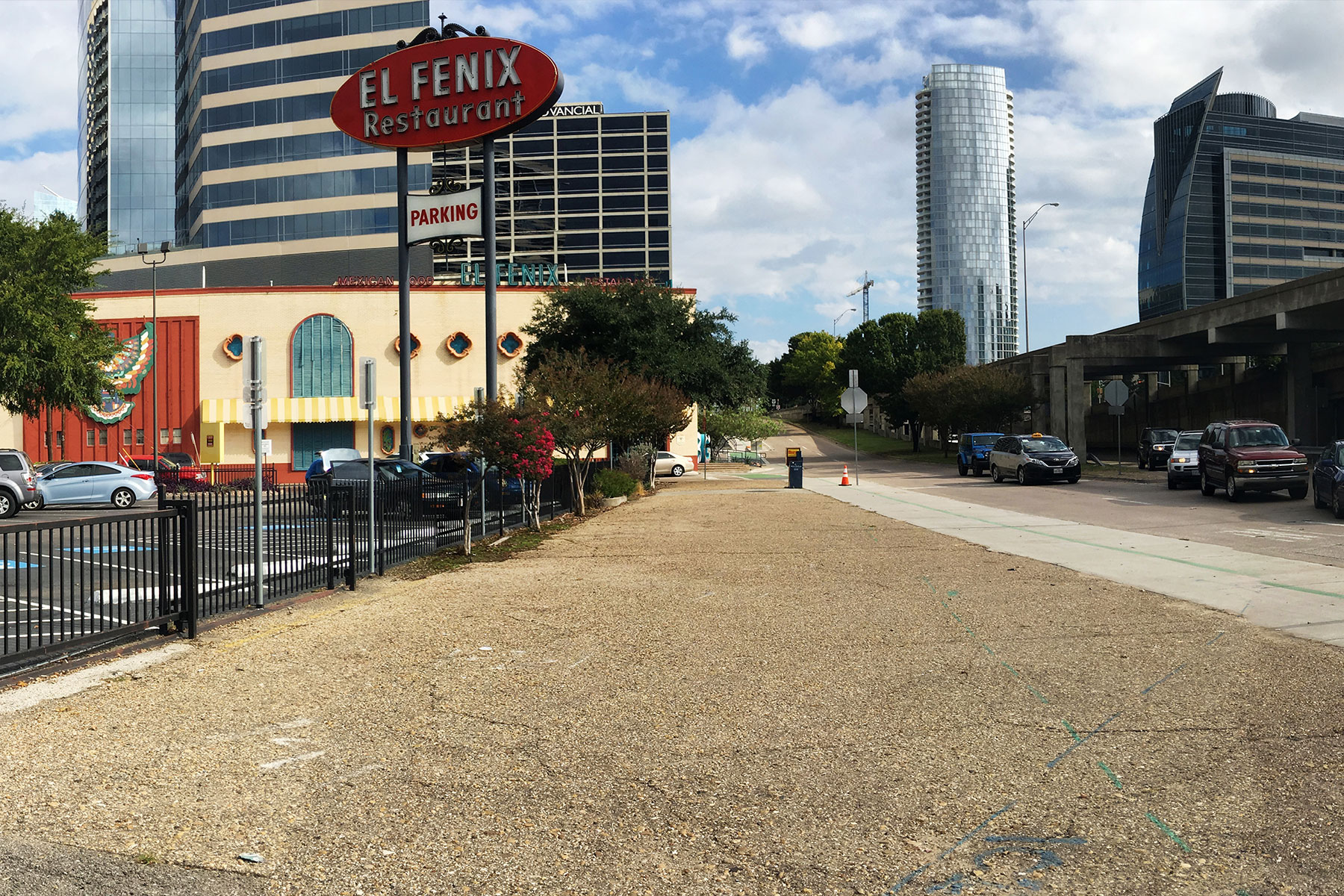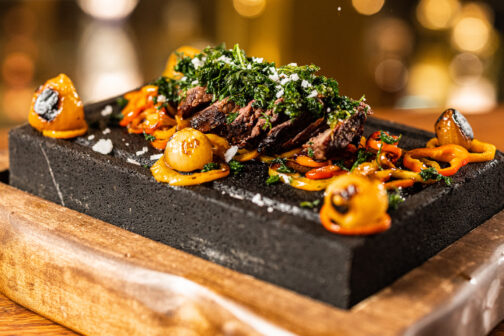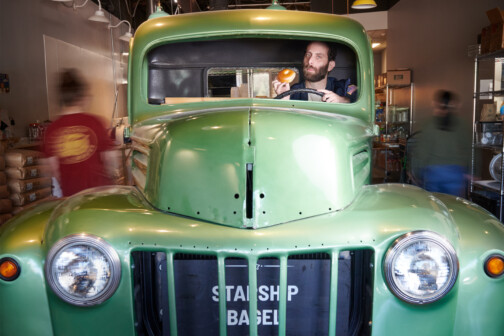Dallas was not designed for pedestrians. This won’t be a surprise to you if you follow our recurring series, Dallas: The City That Hates Pedestrians, which is up to 45 installments in which one of our staffers tries to show how difficult it can be to walk anywhere in this town.
But a regrettable added wrinkle to this story is that Dallas restaurants don’t love pedestrians, either.
Today we’re publishing online my review of The Mexican, a high-dollar Design District restaurant that is surprisingly light on Mexican food. There’s plenty of sass in the article about what you’ll find inside, but now I’d like to talk about the entrance.
Here is how a pedestrian walks up to The Mexican: you walk along the sidewalk of Turtle Creek Boulevard, pass the side of the restaurant building, and then walk up an active driveway where some of Dallas’ fanciest cars are pulling in to the valet stand. The entry is planned pretty much exclusively for drivers valeting their vehicles; any other way that someone might try to reach the door is a secondary use.
That’s regrettable, but common. Walking through the exhaust fumes in the valet line is a frequent experience at upscale Dallas restaurants. Another place to dodge drivers is Uchi, which guards its front door with a pull-in driving loop.
Homewood has its front door on its back side, in the parking lot. Sidewalk access is by a big step that I’m guessing is not meant to be used as a step. José’s front door has no pedestrian access except through the middle of a busy valet lot. Town Hearth suffers from a double impediment: it’s on a tiny wedge of land between three wide avenues, and insulates itself further from easy access by putting its front door behind another valet.
Often this problem is beyond the restaurant’s control. Locations in strip malls, gas stations, hotels, or former fast food standalones are something a business cannot change. By default, these make for different experiences. It’s easy to open a pedestrian-friendly business in the Bishop Arts District or on Lower Greenville. It’s a lot harder if your restaurant is in the middle of a parking lot on, say, Northwest Highway. I don’t know how Town Hearth would be able to transform its heat-island location into a space that is inviting for walkers or bikers.
This is Dallas.
We have to make do with the awful architecture we’ve inherited. What bothers me is when restaurants intentionally make a design issue worse. The high-dollar, New York City import Carbone is the worst offender: it deliberately walled off pedestrian access from Oak Lawn Avenue, requiring patrons to arrive through its parking lot. One time I discovered a secret hidden sidewalk that still connects Carbone to the streetscape around it, only to discover that it is where managers go to sternly lecture their employees.
The main cause of pedestrian-hostile design appears to be a reliance on valet parking. If most of your customers expect to drive up to a building’s front door and walk straight in while somebody else deals with the hassle of storing the big metal box they rode in on, then it makes sense for you to design an entrance that is car-centric. Almost all of my least favorite restaurant entrances involve black Lexus LXs, engines still running, blocking me from reaching my destination.
There are good valet stands, though. Using valet doesn’t mean you’re banned from having a sidewalk, or a pedestrian cut-through down the middle of the parking lot. Meridian is a good example of a restaurant where you can arrive in car or on foot, and Tei-An’s valet loop is surrounded by pedestrianized patio spaces.
One of the few restaurants to truly take action on behalf of visiting pedestrians is Sandwich Hag, which successfully lobbied Dallas’ city government in 2021 for new sidewalks and wheelchair ramps at its street corner. The construction project included regrading the road so that puddles of water would not form in the accessible ramps. Now the restaurant is just waiting—like most of the rest of the Dallas—for newly painted crosswalk stripes. (A city report this May found that 1,500 intersections need crosswalks painted or repainted.)
Those of us who like traveling on foot, or at least without the aid of an engine, will keep feeling welcome in neighborhoods like Deep Ellum and isolated bright spots like Sandwich Hag. But until this becomes The City That Likes Pedestrians—or, at least, The City That Respects a Pedestrian’s Basic Right to Exist—certain high-end restaurants will subject their perambulating guests to the delightful aromas of grilled meats, fine wines, and the exhaust pipes of idling pickup trucks.
Get the D Brief Newsletter
Author






